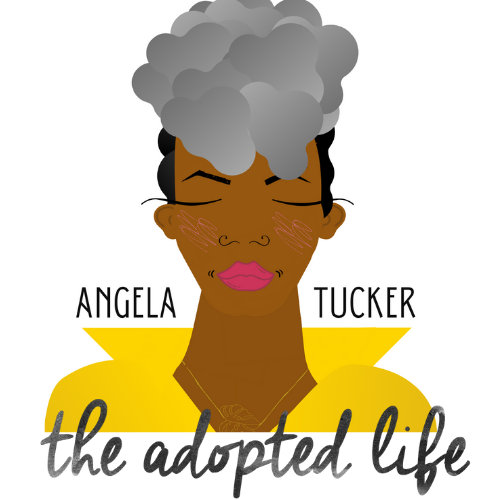Inside the Story: What It Was Like To Be Profiled In The New Yorker
The New Yorker’s Living In Adoption’s Emotional Aftermath longread has been months in the making.
Larissa MacFarquhar, one of the world’s foremost writers on the concept of extreme altruism reached out to me last October to ask about my professional work in adoption. At that time, she had already watched Closure and had read some of my other work. I was gobsmacked to receive her email, knowing that she had written profiles of Barack Obama, Chimimanda Ngozi Adichie, and had the privilege to write profiles of extraordinary thinkers Derik Parfit, Noam Chomsky, Hilary Mantel, and Paul Krugman.
She shared that the impetus for her interest in writing an adoptee-centric story stemmed from an article she wrote in 2015 about adoptive parents who adopted 20 kids, along with having two biological kids. She told that story mostly from the perspective of the adoptive parents and omitted much of the perspective of the adoptees. After learning about the adoptee’s point of view over the past decade, she wanted to expand the narrative and focus on the adoptee experience.
In November, Larissa flew from New York to Seattle and spent three days shadowing me while I mentored adoptees and consulted with adoptive parents in my home office. She and I had emotional conversations late into the evening, as she sought to fully understand my perspectives. She dined with Bryan and I, always keeping her recorder going. She held a notepad, full of pages of questions that she had for me about every inch of my professional life. At this time, I learned that she was combing through the lives of Deanna Doss Shrodes and Joy Lieberthal Rho, two other adult adoptees who are also featured in the piece.
A few months later, Larissa flew to Biloxi, Mississippi to interview Deborah. I was a bit trepid about this, because I knew that dredging up this history is always painful for Deborah. I always fear for Deborah’s health when she is asked to go down memory lane of the years around the time I was born. But, Larissa’s calm demeanor, her careful questions and the ease for which she can meander through conversations gave me confidence to know that whatever Deborah chose to share would be handled with care.
Larissa needed a few more hours with me, so she visited me before a show one evening at my workplace (I ocassionally work at Dimitriou’s Jazz Alley in Downtown Seattle).
In addition to the 16 hours of interviewing by Larissa (over three days) and the 4 hour photo session with Graeme Mitchell, an award-winning photographer, the most grueling part may have been the 5 hour fact-checking process.
“Was the video clip that Angela watched after meeting Deborah for the first time in 2011 28 seconds long?” the fact checker asked. “Was Deborah’s hair color gray or silver?” “When you were a child, were the people who were coming in and out of your house caseworkers or social workers?” …and on and on this went.
My mom, Bryan and Deborah also went through this tedius process. Although terribly difficult to excavate my brain into wee moments that occured ten and twenty years ago, this minutae was also handled with care. The fact checker continuously reminded me about how much they desired to get the story right. Although laborious, ultimately, I appreciated this final aspect of the process. Having been victim to instances of my words being used for clickbait or taken out of context altogether, it gave me hope that this piece might be different.
Larissa let me know that the article would drop on Monday, April 3rd, but she didn’t know the precise time. So, with my nerves aflutter, I checked The New Yorker website on April 2nd at 9pm PST, wondering if they’d posted it (since it would’ve been midnight on the East Coast), but it wasn’t up yet. I checked the website twice more before I went to bed at 11:15pm. I would proceed to wake up each hour to check. At 3am the article dropped. I skimmed it quickly, looking for evidence of sensationalism, but I didn’t find it. With relief, I shook Bryan awake at 3:30am to let him know that the article was out. It was long, and after a quick glance it seemed to be truly adoptee-centered, nuanced and powerful. I put my phone back on my nightstand and slept soundly the rest of the night.
In the morning, I awoke to dozens of messages from adoptees who were thrilled that a mainstream news source finally heard us.
I just sobbed my way through the article. Not sure I even have the words. Thank you for advocating for us, for making us seen, for changing the narrative and the practices. Thank you🙏🏻!
Living in Adoption's Aftermath...that title hits perfect!
Larissa criss-crossed the country for this story that spans multiple generations, multiple types of adoptions and offers multiple vantage points from our perspectives. I agree with so many of the early readers of this masterful longread - it’s one of the strongest pieces on adoptee perspectives to date. I’m thrilled to have been part of this experience and feel grateful to have met so many of the fine staffers at The New Yorker. The experience taught me so much about the amount of work that goes into quality good journalism and storytelling. It was wonderful and exhilarating to be part of the process. I can’t wait for you to read it (or listen to the audio version, narrated by the skilled Gabra Zackman) and hear what you think!




